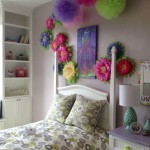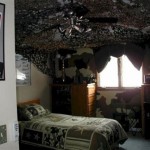Counseling Room Decor: A Guide to Creating a Supportive Environment
The physical environment of a counseling room plays a vital role in establishing a therapeutic and supportive atmosphere. Well-chosen decor can enhance client comfort, promote relaxation, and foster a sense of safety and trust. Here's a comprehensive guide to creating a counseling room decor that supports therapeutic outcomes.
Color Palette
Colors have a significant impact on mood and behavior. Choose a color scheme that is calming and conducive to relaxation. Soft neutrals such as beige, cream, or light blue create a soothing ambiance. Avoid overly bright or stimulating colors that can be distracting. Consider using accent colors in small doses to add a touch of warmth or vibrancy.
Lighting
Natural light is ideal for counseling rooms, as it promotes alertness and well-being. If natural light is limited, use a combination of diffused overhead lighting and adjustable task lighting to create a comfortable and well-lit environment. Harsh or flickering lights can cause discomfort and distraction.
Furniture
The furniture in a counseling room should be comfortable and inviting. Choose chairs that provide good back support and allow clients to relax and focus on the session. Consider adding a couch or lounge chair for additional comfort. A small table or side table can provide a convenient space for notes and materials.
Personal Touches
Adding personal touches to the room can make it feel more welcoming and create a sense of connection. Display artwork that is calming and inspiring. Place plants around the room to add a touch of nature and improve air quality. Incorporate scent diffusers with relaxing aromas such as lavender or chamomile.
Privacy
Ensuring privacy is essential for clients to feel safe and comfortable sharing their thoughts and feelings. Use curtains or blinds to block out distractions. Create a designated space for confidential discussions. Consider using a white noise machine to minimize outside noise.
Declutter and Organize
A cluttered and disorganized room can be overwhelming and hinder the therapeutic process. Keep the room tidy and free of unnecessary items. Use shelves and storage bins to organize paperwork and materials. A well-organized space promotes clarity and helps clients focus on the session.
Cultural Inclusivity
Consider the cultural background of your clients when designing the counseling room. Incorporate artwork, symbols, or objects that are meaningful to their culture. This demonstrates respect and creates a more inclusive environment.
Ongoing Evaluation
The counseling room decor should be evaluated and adjusted as needed based on client feedback and observation. Pay attention to how clients respond to the environment and make changes accordingly. A well-designed counseling room is a constantly evolving space that supports the therapeutic process.
By carefully considering the elements discussed in this guide, counseling professionals can create a room decor that fosters a welcoming, supportive, and therapeutic atmosphere for their clients.

Pin On Counseling Office Decor

Therapy Office Decor

Therapy Office Decor Ideas Brands

Livsrum Gallery Couning Room Decor Design Therapy Office

Therapy Office Decor Ideas In 2025 Wellness Fi

Bundle 8 Therapy Office Decor The Poster Counseling Wall

Counseling Office Decor 7 Things To Consider Rio

Therapy Offices We Adore 73 Spaces That Inspire Zencare Office Decor The Counseling

The Office Decor Ideas Bring Positive Energy

Botanical Therapy Set Of 6 Prints Office Decor Now







